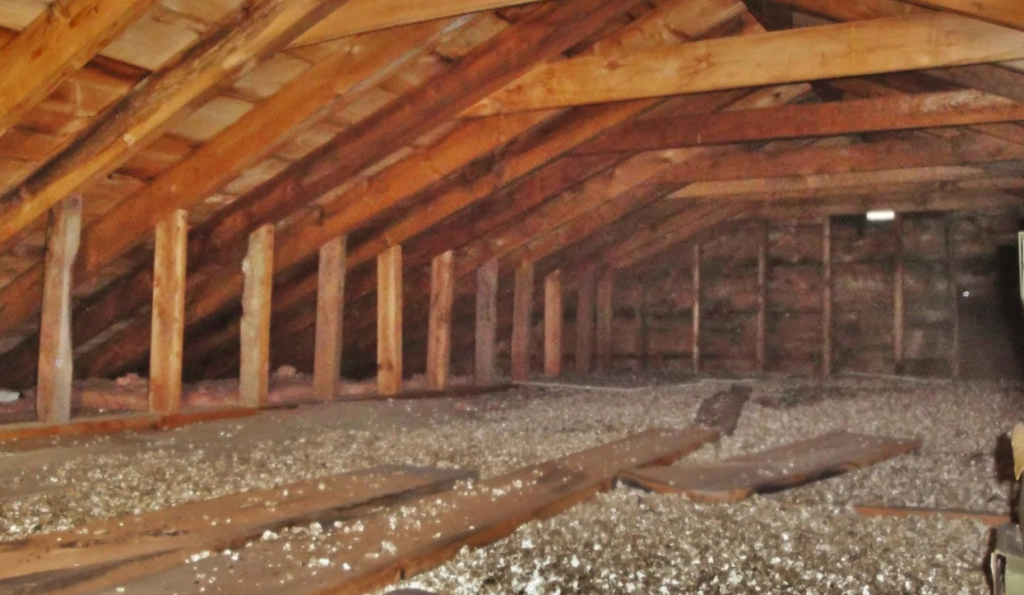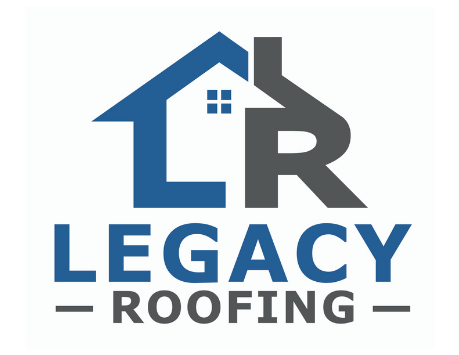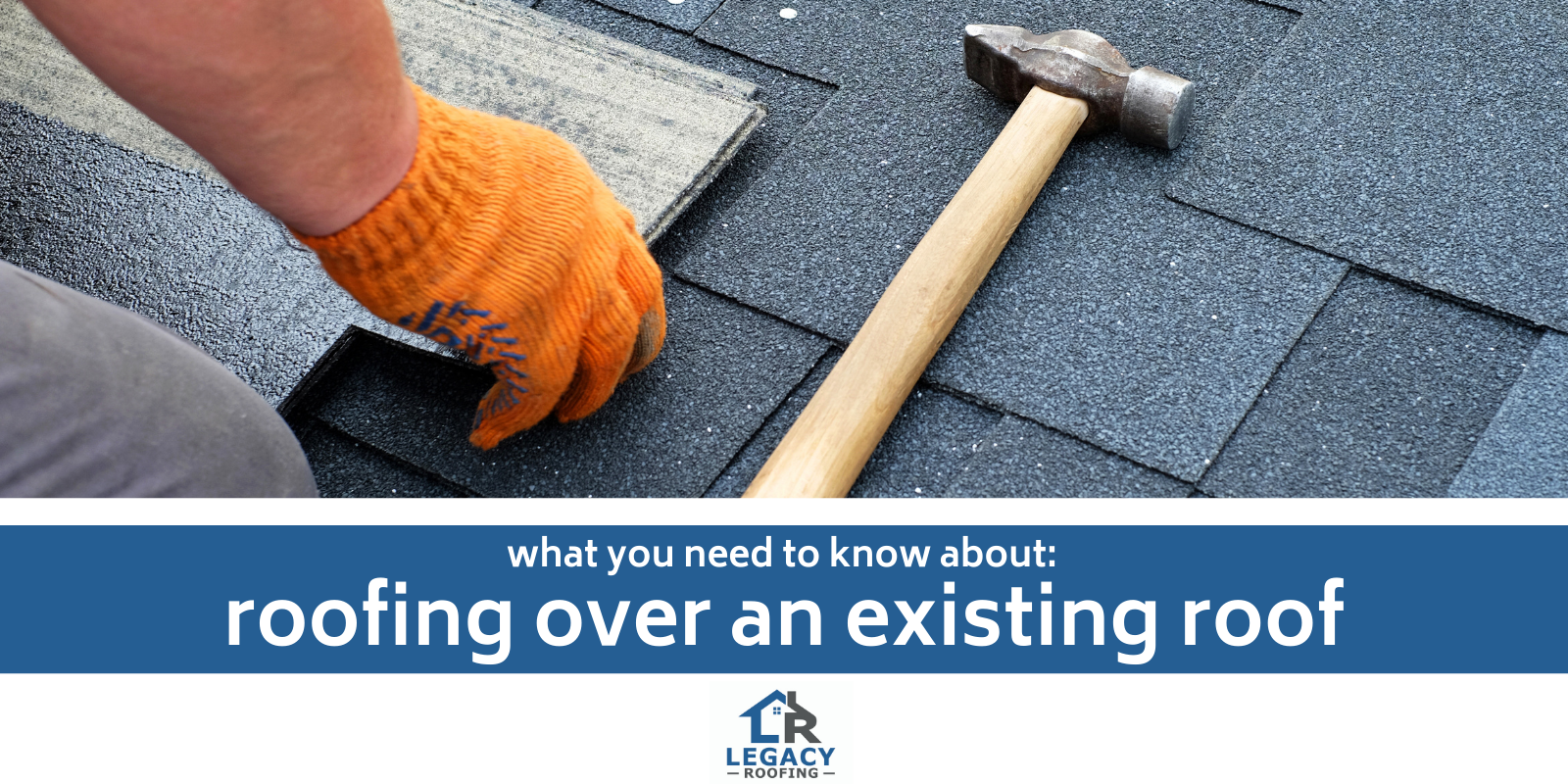Are you wondering if it is ok to roof over your existing roof?
Roofing over shingles is a thing of the past, and it used to be common practice. However, most reputable roofing companies strongly discourage it. The method most roofing contractors practice today is installing a completely new roofing system by stripping the roof of its old shingles and replacing it with new ones.
Today, the expert roofing team at Legacy Roofing Idaho will guide you through the old roofing over an existing roof, also known as a nail-over reroof, and why the cons far outweigh the benefits.
First, what is reroofing?
Reroofing, or roofing over an existing roof, is the practice of adding a new layer of shingles directly on top of the old layer of shingles. As most building codes permit, a roof can have up to two layers of shingles on it. This is also called a roof overlay and can be seen as a slightly cheaper alternative to a complete roof replacement. ep
However, there are drawbacks to this method, and most home insurance companies prefer a full roof replacement for energy, longevity, and warranty purposes.
When does a roof need a replacement?

Over time, variables such as climate, faulty gutters, and old age will compromise your roofing materials. The average shingle roof lasts between 15-30 years, depending on the material and maintenance. While the life expectancy of a new shingle roof is now 30+ years, most of the older shingle roofs are due for replacement around year 20.
Below are some signs that you might need to have your roofing system replaced:
- Cracked, broken, and missing shingles
- Unevenness of roof
- Excessive moisture buildup in between shingles and roof (especially when mold spores are present).
- Water leaks and stains on the interior roof and walls
- Gutter issues (broken gutters)
- Attic leaks (go in your attic and look for dark stains on your wood)
- Roof leaks or water damage inside
- Roof decking issues
If you notice these issues, calling a roofing company to look at your roof is best practice. They can help you with your budget and point you in the right direction regarding insurance. In some cases, insurance will cover the roof replacement cost if the damage was caused by a storm.
Now that you know the signs of possible roofing issues, let’s explore how the old roofing process over shingles used to work.
Roofing Over an Existing Roof: Nail-Over Reroof
Roofing over shingles, a “nail-over reroof,” is not completely outdated. However, very few contractors would recommend this method of shingle installation. The preferred method is to remove the old roofing shingles and lay them down to the decking, then install a new roofing system.
A roof over can lead to issues such as:
- Uneven roof shingles
- Flashing issues still exist
- Does not fix water damage issues
- No inspection of roof decking
- Heavier weight on roof structure
It is generally discouraged by most roofing experts today, and insurance companies want a brand new roofing system. By replacing the entire roofing system, you, as a homeowner, ensure the longevity of your roof, while slapping new shingles on top is similar to a bandaid.
| YES: | NO: |
| You can roof over your existing roof, and this occurred more often than not back in the day. The thought was that more layers meant more protection. However, it is not the preferred installation method any longer so you usually don’t want to do it! | As it stands today, you should not roof over your existing roof. The technology has changed over the years and it is better to tear off the old layer of shingles and replace them with new shingles! |
Benefits of a Roof Over Shingles:

Cost-Effectiveness
Roofing over your existing roof can save you on additional costs as opposed to doing it from scratch since there is already an existing layer of shingles. However, what you save in the short term will often cost more in the long term as you might have to replace the entire roof system in a few years as roof repairs are more complicated with two layers of shingles.
Convenient Roofing
Can you shingle over shingles? Sure, and it might seem like a convenient way to have a new roof installed, which is one of the reasons companies used to use the reroofing method.
It’s Faster
Re-roofing for professional roofers is a tad bit shorter as they don’t have to strip the old shingles from the roof like a full roof replacement. Asphalt roof replacement is generally a quick process either way.
Cons of Nail-over Reroofing:
Shortens the lifespan of your roof.
Earlier on, I mentioned there is no one-size-fits-all option when it comes to re-roofing, and in some cases, there isn’t a viable option at all to do so. Additional layers of shingles play an integral role in trapping heat. When that occurs over time, it actually does more harm than good in increasing the decomposition rate of the shingles. This inadvertently will cause you to start from scratch and replace it sooner rather than later, which is a burden not only in the cost but also in time and peace of mind!
Shingles are too heavy:
Additional layers of shingles can be cumbersome, which can thus compromise the structural integrity of your roof! Some varieties of shingles, like polymer composite shingles, are denser (can be 350+ per square foot!) and are likely to do just that in combination with stress from the elements in your particular region.
Curb Appeal
Unevenness can be the catalyst for excess moisture to accumulate in particular areas, which invites a whole host of issues, such as the spawning of mold spores, moss, pests, structural damage, and so forth! Yikes, you might want to think twice!
New Roof Info:

New roofing solutions call for modern techniques. That is why a new roof system is your best bet when you need to replace your shingles. Replacing the ridge vents, underlayment, flashing, and shingles will guarantee you have a long-lasting roof and a warranty to match. Even if you want to replace shingles with metal roof, you still want to strip your roof down to the decking.
Below are some helpful resources for you to explore to help you better understand the roof replacement process:
What’s the Verdict?
Re-roofing is a home improvement project that works for some and can be a disaster for others! Here at Legacy Roofing Idaho, we never cut corners or take the cheap road, so we do not perform roof overlays or reroofs. We specialize in offering the best roofing installations at the best prices in the Treasure Valley, and that all starts with our quality roof installation process. Can your roof over existing shingles?
Yes, but should you, NO!
FAQ
1. Can You Roof Over Existing Shingles?
Yes, you can roof over existing shingles, but the practice is rarely used. Sometimes homeowners will ask us, “Can you put shingles over shingles?” and while we can technically, we do not practice that here at Legacy Roofing. We prefer a complete roofing replacement instead of roofing over old shingles.
2. When is Reroofing not a Good Idea?
- Reason: Building codes in most areas allow a maximum of two layers of roofing. Adding a third layer can exceed weight limits and compromise structural integrity.
- Solution: A complete tear-off is required.
3. What are the pros and cons of roofing over shingles/roof overlay:
We will continue to emphasize that roof overlays and reroofing should be avoided; however, the pros some will say include:
- Cost Savings: It eliminates the labor and disposal costs of removing the old shingles. Some will also say that another layer could protect your roof from hail damage.
- Time Savings: The process is faster since you don’t have to remove the old roof.
- Less Mess: There’s no debris from tearing off the old shingles.
The cons of “Shingle over existing shingles” includes:
- Extra Weight: Adding another layer of shingles increases the weight of your roof structure, which could be a problem for older homes or those with weak framing.
- Reduced Lifespan: New shingles may not last as long because they don’t lie flat and can’t bond properly to the roof deck. Does not account for ventilation issues, prior hail issues, replacing the roof eaves properly, and more.
- Potential for Hidden Damage: Existing issues, like rot, leaks, or damaged decking, may go unnoticed and worsen over time.
4. Can a metal roof be installed over shingles?
Technically speaking, you can install a metal roof on top of shingles; however, this would look terrible and lead to countless issues. Roofing over existing shingles, even with a metal roof, can lead to leaks, more repairs, and the need for a future roof replacement sooner than usual. Also, installing metal roofing on top of shingles does not meet the standard for safely installing the roof on the proper surfaces. Extreme weather could cause the metal roof to be easily damaged.
5. How do you know if your roof has a reroof already?
Sometimes we will inspect a roof and notice it has two layers. This will be harder for the common homeowner to see; however, you can go to your attic and look at the number of nails, inspect your roof, or call a contractor. The average asphalt shingle strip requires a certain amount of nails per strip.


